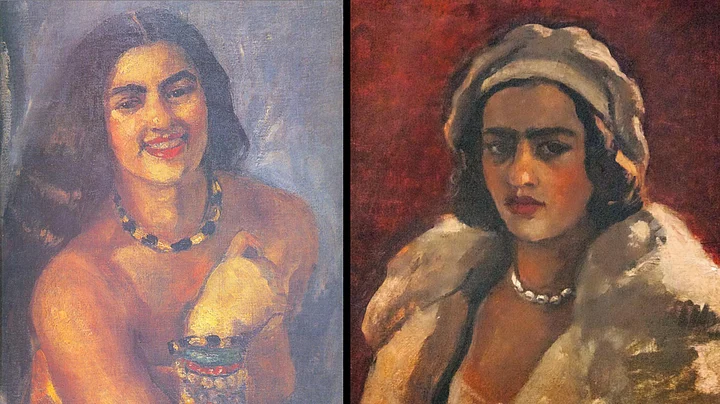(This story was first published on 29 January 2017 and has been reposted from our archives to mark Amrita Sher-Gil’s birth anniversary.)
Much has been written about how Amrita Sher-Gil became a pioneering light in the world of Indian Modern Art, establishing herself almost 20 years before the Progressive Artists Group began in Mumbai, which was founded by Souza, Husain, Raza, Tyeb and others.
She broke stereotypes both as a woman and as an artist. Her paintings continue to break auction records, the most recent being at the Sotheby's auction in New York in 2015. A self portrait, oil on canvas painting dated 1931, was sold at a whopping price of $2.92 million.
On her birth anniversary, instead of starting out on the crucial elements of her art, I would instead like to focus on her personality that made a lasting impression on those who came in contact with her, and as well as those who didn't.
Not just a greater artist, Sher-Gil could have been an influential thinker of India’s Freedom Struggle, if it wasn’t for her sudden death in 1941 at a young age of 28 years.
A rude shock that several of her fans and followers find it difficult to come to terms with even today.
Born to a Hungarian mother and an Indian Sikh father, she saw the light of India's Independence beginning to spread to its margins. She recognised signs of reluctant women stepping out of their homes and finding their own identity in their activism.
Particularly telling is her choice of subjects. She chose to showcase the restlessness she saw in the poor women of Saraya, a village in Gorapkhpur. Yashodhara Dalmia writes in her book Amrtia Sher-Gil – A Life: "She understood their stifling lives, the waste of capacities that could have easily made them into productive, outdoor people."
Freedom fighters like Jawaharlal Nehru and Sarojini Naidu could well read signs of a thinker-activist in her. In a condolence letter to her parents, Nehru wrote:
I felt that she was precious to India and looked forward to the ripening of her genius.
Naidu remembered her for "her wonderful genius and power".
Her aura resonates in the world of arts and literature even today. There has been talk of actor Sonam Kapoor playing the role of Sher-Gil in a mainstream Bollywood biopic on the artist.
Author Salman Rushdie explains how his character Aurora Zogoiby in The Moor's Last Sigh was inspired by Sher-Gil. In his Foreword for the book Amrita Shergil: A Self-Portrait in Letters and Writings, (edited by artist and Sher-Gil's nephew Vivan Sundaram), Rushdie writes:
This ferocity of mind and sharpness of tongue, combined with an unashamed openness about her own behaviour, and an insistence on her right to behave as she chooses is also present in her thoughts about her own family and friends.
Lahore, the city where she breathed her last and which posthumously held her final solo show soon after, has a special love for her even today, despite whatever strains India-Pakistan relations may have undergone since Partition.
The Lahore Museum still displays her painting Veena Players as part of their permanent collection.
Pakistani architect Maaria Waseem remembers visiting an old bungalow, House No 23, Ganga Ram Apartments on Mall Road in Lahore, that used to be Sher-Gil's home.
It happened quite by accident while she was working with a firm. She had never heard of the artist before, but that visit peaked her interest in Sher-Gil's work and life.
For the past few years, Maaria has been sharing pictures of this house on her Facebook page to mark Sher-Gil's birth anniversary, which renewed fresh interest in this bungalow. It's a private residence and you aren't allowed to enter, but Maaria always felt pulled towards it as a mystery.
“Even though I am not an artist, I came across her house and got to know her work. I have a belief that some people, even after they are gone, do not let themselves be forgotten that easily. Their souls find a way to keep themselves alive by finding people who make others aware of their presence.”
(Sahar Zarman is an independent arts journalist and consulting newscaster at NewsX. She has founded ‘Hunar TV’, Asia’s web channel on the arts. The views expressed are the author’s own and The Quint is not responsible for them.)
